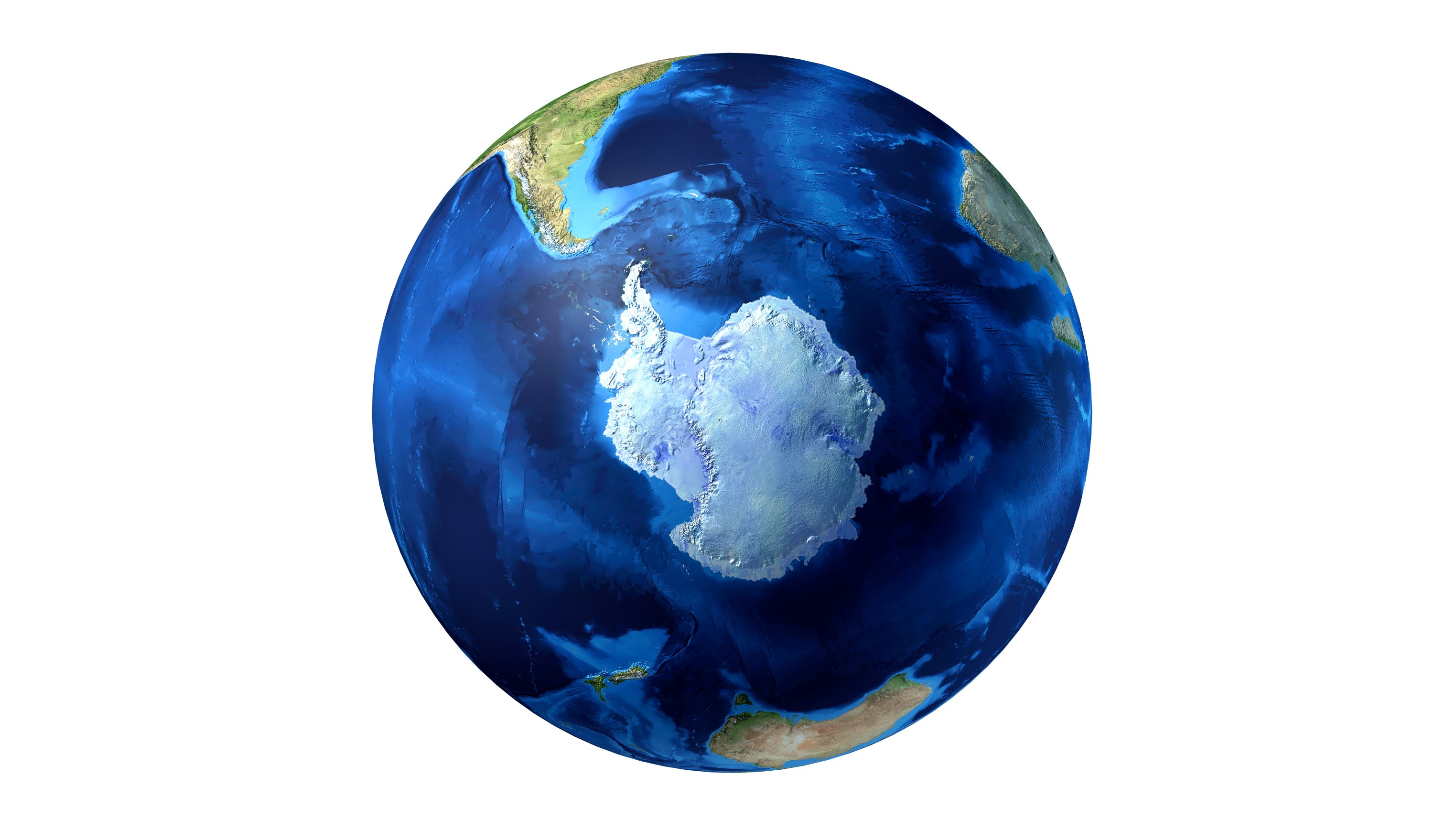When did Antarctica become a continent?
Antarctica is frigid, but that's a pretty new phenomenon.

Antarctica, the fifth-largest continent, is commonly known for penguins, massive calving ice shelves and failed exploratory expeditions. But this frozen swath on the bottom of the world wasn't always so isolated; it was once part of a larger supercontinent. So when did it become its own continent?
Today, Antarctica is the largest block of ice on Earth, covering more than 5.4 million square miles (14 million square kilometers). Hidden beneath the ice, the rocks of Antarctica reveal the dynamic history of the continent.
"Antarctica is a continent just like any other that has a wide variety of landscapes (mountain ranges, valleys and plains) all shaped by its geologic history," said Libby Ives, a doctoral candidate in geosciences at the University of Wisconsin-Milwaukee. "Much of this geologic history remains a mystery because less than 1% of the continent has rocks exposed that could help us tell this story."
Related: Who owns the Arctic?
Many of the rocks exposed in Antarctica are part of the Transantarctic Mountains, which reach a height of about 14,700 feet (4,500 meters), or higher than the Rocky Mountains in North America. The vast continent is divided into two parts: East and West. From what geologists can piece together, East Antarctica is a craton, an ancient continental block of Earth's crust and the uppermost mantle composed of igneous, sedimentary and metamorphic rocks, some of which are more than 3 billion years old, Ives said. In contrast, West Antarctica is relatively young and composed mostly of volcanic rocks forged in the tectonically active Ring of Fire around the time the supercontinent Gondwana began to break apart during the Jurassic period (201.3 million to 145 million years ago).
Gondwana has ancient roots: It formed about 600 million years ago during the late Ediacaran period, before Pangaea even existed. Starting about 200 million years ago, Pangaea broke apart into two hulking pieces, with the supercontinent Laurasia in the north and Gondwana in the south. About 180 million years ago, Gondwana — which included parts of modern-day Antarctica, Africa, Australia, India and South America — began to splinter into the continental fragments that are more familiar to us today. Basaltic rocks found on the eastern margin of Antarctica match those found in South Africa, representing the early fractures in Gondwana, according to Discover Antarctica.
Antarctica was warmer during the Mesozoic era (252 million to 66 million years ago) than it is today, a 2006 modeling study found, and it had a temperate rainforest replete with dinosaurs and other ancient life during the Cretaceous period (145 million to 66 million years ago). In fact, it served as a key southern passageway; for tens of millions of years, South America, Antarctica and Australia remained connected, allowing flora and fauna to move across their great expanse. For instance, fossil evidence shows that marsupials, which originated in North America at least 125 million years ago, trekked southward to South America and eastward across Antarctica before eventually arriving in Australia at least 55 million years ago, Live Science previously reported.
Get the world’s most fascinating discoveries delivered straight to your inbox.
Scientists aren't certain when Antarctica became an official loner, losing its land connections with Australia and South America. "The answer also sort of depends on what one considers 'continental breakup,'" Matt Lamanna, a vertebrate paleontologist at the Carnegie Museum of Natural History in Pittsburgh, told Live Science in an email. "Is that the first time that seawater became emplaced between two formerly contiguous landmasses, even if land-living species could still readily disperse between them? Or is it when that ocean or sea became so wide and deep that dispersal became exceedingly difficult?"
That said, most recent research finds that the Drake Passage, between Antarctica and South America, and the Tasman Gateway, between Antarctica and Australia, opened just as the Eocene epoch turned into the Oligocene epoch around 34 million years ago, "give or take a few million years," Lamanna said.
Upon the final rupture, Australia progressed to the north, while Antarctica began to drift southward. As the Drake Passage and Tasmanian Gateway opened between the continents, they allowed cold water to flow continuously around Antarctica, isolating the continent from warm ocean currents. At the bottom of the planet, Antarctica began to freeze over.
"The opening of the Drake Passage and Tasmanian Gateway allowed for the Antarctic Circumpolar Current to fully form," Ives told Live Science. "These were the final 'events' in the breakup of Gondwana."
Today, Antarctica plays an integral role in Earth's climate system. The massive ice sheets covering the continent reflect incoming sunlight, keeping the continent cool. As the planet warms due to climate change, the ice sheet will melt, exposing more rocks to study but also reflecting less incoming sunlight and perpetuating planetary warming.
The ice sheets on land also extend over the adjacent waters, such as the Southern Ocean, Weddell Sea and Ross Sea, forming ice shelves that occasionally break apart. As more ice breaks free, it will melt, adding massive volumes of fresh water into Earth's oceans. Today, scientists are actively studying the ice in Antarctica and the sediment in the adjacent seas and oceans to understand past climate fluctuations and explain how climate change could affect the overall planet.
Originally published on Live Science.

As a scientist, Stacy Kish has focused her research on Earth science, specifically oceanography and climate change. As a science writer, she explores all aspects of science from mites living books to noctilucent clouds, stretching across the mesopause. She finds every aspect of science intriguing and considers a good day to be one where she learns something new and unexpected. In her free time, she works on perfecting new cake recipes to share with others.
- Laura GeggelManaging Editor



